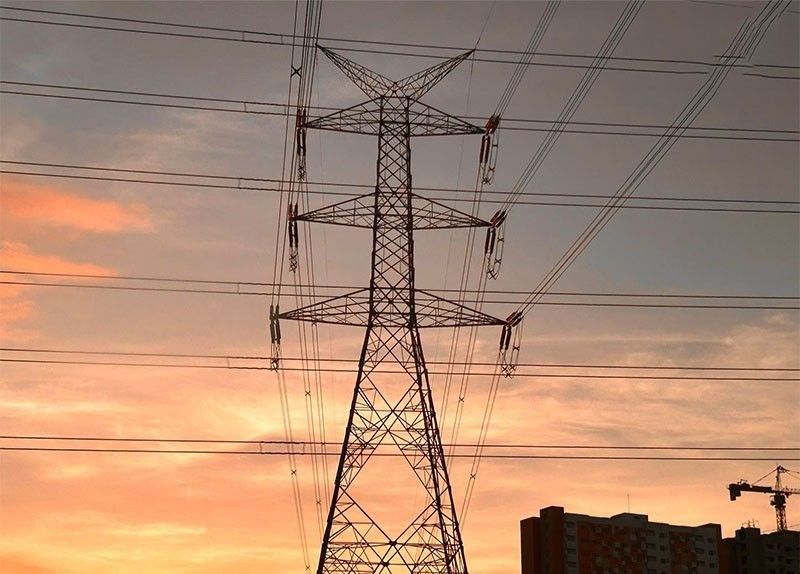It’s about time


On Jan. 2, 2024, a day after New Year’s Day, Western Visayas was plunged into total darkness due to a widespread power outage that adversely affected the entire Panay Island and portions of Negros Island.
The power outage lasted for four days. But even with power supply back, legislators, local government units and businessmen want somebody to be accountable and responsible for what happened.
No less that President Marcos blamed private concessionaire National Grid Corporation of the Philippines or NGCP for the massive power outage which he said has caused significant hardship on businesses and healthcare.
He noted that NGCP failed to resort to manual load dropping, resulting in the crisis that burdened residents of Western Visayas.
The President said accountability lies with the NGCP which is tasked with grid stability, which in turn involves proactive responses to breakdowns and unexpected events, a duty that the power transmission company unfortunately has not fulfilled adequately.
In fact, in his second state of the nation address, he underscored NGCP’s shortcomings, noting that the Energy Regulatory Commission (ERC) had flagged 68 delayed grid connection projects which effectively contributed to the unstable power supply in Luzon and Visayas.
According to Iloilo Mayor Jerry Trenas, the blackouts have cost his city alone at least P400 million in economic losses.
Meanwhile, Energy Secretary Raphael Lotilla said the blackouts in Iloilo, Capiz, Aklan and Antique were preventable, adding that NGCP failed to act on the power disturbances due to the tipoffs at the Panay Energy Development Corp. (PEDC) Units 1 and 2 and the Palm Concepcion Power Corp. (PCPC) Unit 1.
The Independent Electricity Market Operator of the Philippines for its part noted that there was a two-hour window when NGCP could have proactively called on the distribution utilities and electric cooperatives to reduce their loan to prevent a collapse.
The Senate now wants investigation into NGCP’s legislative franchise. According to Senate committee on public services chair Sen. Grace Poe, the probe aims to determine whether NGCP is fulfilling its obligation to ensure uninterrupted delivery of affordable, stable, and accessible electricity to the people of Panay and to see whether the grantee should shape up or ship out.
Poe emphasized that for a franchise as critical as the operation and management of power transmission lines, there should be no room for inefficiency, mismanagement or blunders.
Senators Risa Hontiveros, Francis Tolentino and Imee Marcos are also calling for a review of NGCP’s franchise.
In July last year, DOE Secretary Raphael Lotilla said there was an ongoing performance audit of the NGCP meant to help the company attain power transmission targets. The audit will look into NGCP’s adherence to the concession agreement, as well as its investments on transmission facilities.
But NGCP insists that it was not to blame, saying there was no transmission disturbance before the tripping of PEDC Unit 1.
It stressed that it immediately fixed the transmission system and normalized voltage before several power plants inexplicably tripped, adding that it had undertaken actions within protocols contrary to what some officials and critics are saying.
The operation, management, or control for public use of electricity transmission is still classified as a public utility under Republic Act 11659 or the Public Service Act as amended.
The new law, which came into effect on April 4, 2023, prohibited entities controlled by or acting on behalf of a foreign government or foreign state-owned enterprises from owning capital in any public service classified as public utility or critical infrastructure.
The prohibition shall apply only to investments made after the effectivity of the amended PSA. However, foreign state-owned enterprises which own capital prior to the effectivity of this law are prohibited from investing in additional capital upon the effectivity of RA 11659.
NGCP is 40 percent owned by the State Grid Corporation of China (SGCC), the technical partner of a local consortium that won the bid to privatize the Philippines’ power transmission infrastructure in 2007.
SGCC, headquartered in Beijing, is a Chinese state-owned electricity utility corporation and is the largest utility company in the world. According to Fitch Ratings, SGCC is 91.68 percent owned and controlled by China’s central State-owned Assets Supervision and Administration Commission (SASAC), with the remaining 8.32 percent held by the National Council for Social Security Fund.
Fitch Ratings also revealed that SGCC is one of the SASAC’s vice-ministerial-level backbone state-owned entities (SOE) and carries more social and political responsibilities than a purely commercial SOE. It said the chairman and senior management are appointed by the Central Committee of the Communist Party of China and the State Council, adding that SGCC’s operations and investment are subject to a very high degree of government control and influence.
Before NGCP was established, the transmission system in the country was operated and maintained by the National Transmission Corp. (TransCo) which is a government-owned and controlled corporation. The Electric Power Industry Reform Act or EPIRA called for the privatization of the transmission sector.
Last year, the President said he supports a probe to determine whether the government should take over the country’s sole power grid operator which is partly owned by China.
Earlier, Senate committee on energy chair Raffy Tulfo said there was an intel report divulging that China has the capability to remotely access the country’s national grid and sabotage it.
With the long-standing territorial dispute between the Philippines and China in the West Philippine Sea, the increasing and sustained presence of Chinese coast guard and maritime militia vessels in various parts of the sea, and issues of Chinese illegal occupation, unlawful establishment of infrastructure, and incidents of incursions and encroachments within the Philippines’ exclusive economic zone or EEZ, it is understandable why concerns are being raised about China’s investment in a sector that is as critical as power transmission.
Despite assurances from NGCP officials that China’s State Grid has no direct control over the transmission system’s operation, lingering doubts persist.
Some say that the stakes are high, given that as stakeholders, the Chinese entity enjoys privileged access to NGCP’s operations. This access, they added, implies the potential for obtaining crucial information, making the entire transmission system susceptible to external interference.
They also noted that as geopolitical tensions heighten in the West Philippine Sea, the need for a thorough reevaluation of the country’s energy security becomes imperative and that safeguarding our power grid isn’t solely about ensuring a stable supply of electricity but also about fortifying a linchpin of national defense.
It is now being suggested that the government should start setting the stage for takeover of SGCC’s 40 percent stake in NGCP. Maharlika Investment Corp. (MIC) president and chief executive officer Rafael Consing Jr. has said that he is endorsing the proposal of House Speaker Marin Romualdez for MIC to strategically invest in NGCP.
Analysts say that this plan by the country’s first sovereign wealth fund to invest in NGCP makes both economic and security sense.
It was in January 2009 when NGCP was officially established and was given a franchise good for 50 years. Fifteen years after NGCP was created, it’s about time that our government take back what shouldn’t have been given to a foreign government in the first place.
For comments, e-mail at [email protected]
- Latest
- Trending





























